How Prodigy's Logic Model Improves Student Outcomes

Prodigy’s mission is to help every student in the world love learning! We believe that every child can succeed, regardless of where they’re born. We act on that belief by reimagining learning and working to build a world where every child has equitable access to transformational content.

But, is Prodigy research-based?
Prodigy is deeply engaging for students and elevates their confidence through adaptive play. Plus, it helps make differentiation, motivation, rewards and intervention easy for parents and educators.
Prodigy takes student achievement seriously!
Our logic model (below) outlines how Prodigy helps facilitate improved student outcomes and makes math engaging.
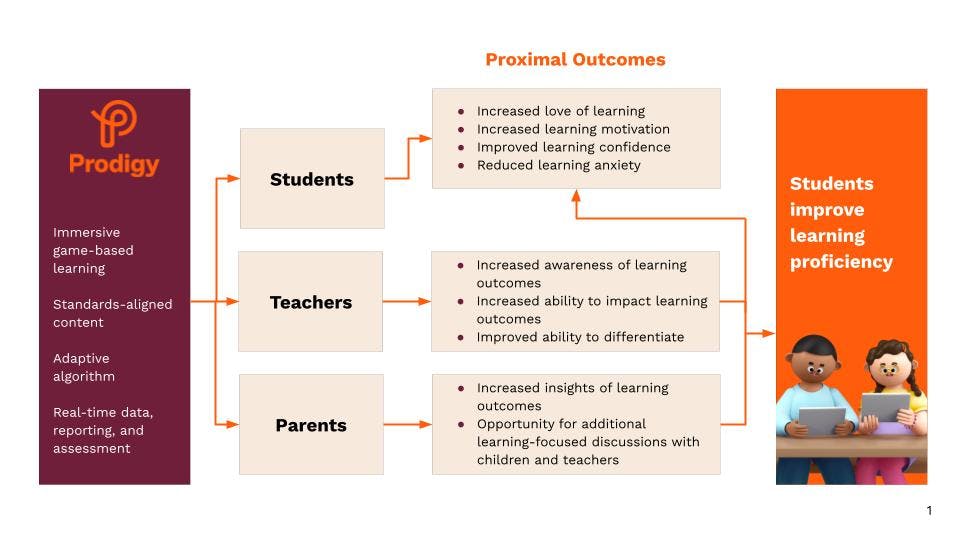
On the far left, you can see the core elements of Prodigy:
- Immersive, game-based learning platform
- Curriculum-aligned content
- Adaptive algorithm
- Real-time data, reporting and assessment
In the next column to the right, you can see all of the important stakeholders who help make the student experience effective:
- Teachers
- Parents
- Administrators
Together, they support student learning.
When all of these elements come together, we can work collaboratively to help students improve mathematics proficiency and love learning!
Keep reading to find out more about the elements of Prodigy’s logic model and why they have such an impact on student proficiency in mathematics.
What’s digital game-based learning and how does it help students?
At Prodigy, it’s been our mission to blend students’ love of digital games with critical, standards-based math concepts. Our digital game-based learning (DGBL) platform captures their imagination and intrinsically motivates students to engage with essential content.
Math-based DGBL tools have been shown to increase student achievement and performance (Clark, Tanner-Smith, & Killingsworth, 2016; Tokac, Novak, & Thompson, 2019).
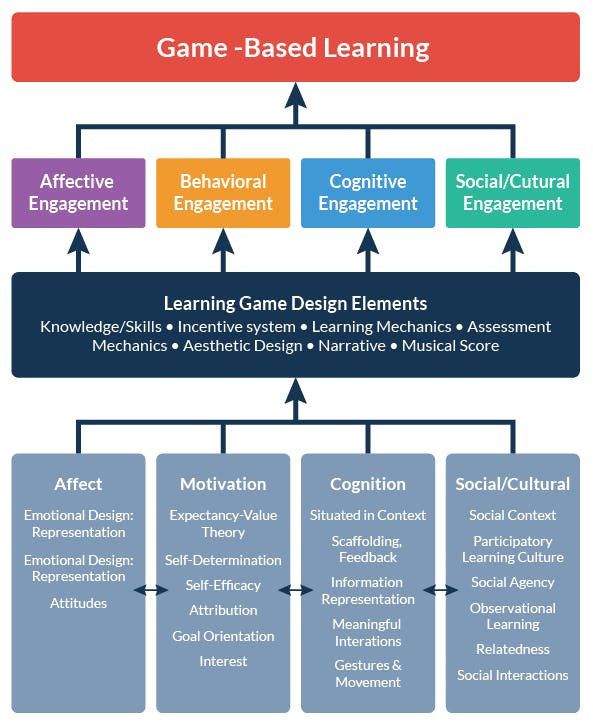
DGBL helps students learn critical curriculum while having fun. Teachers introduce new material in class and prepare students to engage with this new material on their own. Then, students practice these concepts through digital games in order to work toward skill mastery.
Research has shown DGBL works best in tandem with in-class lessons — in other words, using the blended learning strategy. Plus, playing games to practice what’s taught in class can help students gain confidence with educational content and relieve things like math anxiety.
As technology has evolved, DGBL platforms like Prodigy Math Game use data based on real-time analytics that pinpoint students’ strengths and weaknesses. The data is collected and outlined in reports in Prodigy’s teacher dashboard, where teachers can use it to inform teaching, lessons and interventions at both individual and class-wide levels.
This highly personalized and engaging learning develops 21st century skills in students, including:
- Increased motivation
- More effective communication
- Critical thinking skills
- Persistence in the face of adversity (Van Eck, 2015)
Prodigy is designed to support teachers in their quest to make students digital learners. According to a survey of 700 teachers, 74% of K to 8 teachers already use DGBL platforms to augment instruction (Takeuchi & Vela, 2014).
Beyond such wide adoption, this survey also revealed that teachers who use DGBL in the classroom use it frequently. Of the teachers surveyed, 80% have students play at least monthly and over half have their students play weekly (Takeuchi & Vela, 2014).
Learn more about how digital game-based learning improves student success
Curriculum-aligned content and mastery learning
Prodigy provides curriculum-aligned content for students based on the academic standards in the state they select upon registering* and provides over 1,500 1st to 8th grade math skills.
Prodigy also tracks students' progress with an adaptive algorithm in order to ensure students attain mastery in a given topic before moving on to the next. This model is based on Bloom’s Learning for Mastery (Bloom, 1968) and Keller’s Personalized System of Instruction (Keller, 1968).
Mastery learning assumes any student can reach high levels of achievement given sufficient instruction, time and perseverance through materials at the student’s own pace.
Research shows that students who are taught using mastery learning reach higher levels of achievement compared to students who are exposed to traditional methods (Anderson, 1994; Guskey & Pigott, 1988; Kulik, Kulik, & Bangert-Drowns, 1990).
*For students whose state standards aren’t yet fully aligned with Prodigy, the platform will default to the Common Core standards.
Learn more about how mastery learning helps every student succeed
Prodigy’s adaptive algorithm, explained
Ever wondered how Prodigy decides what math questions to give to each student? While students are exploring the Prodigy world, our adaptive algorithm is always at work. Built and continually refined by our in-house data scientists, it automatically detects students’ strengths and areas of need and keeps students playing in their zone of proximal development (Vygotsky, 1978).
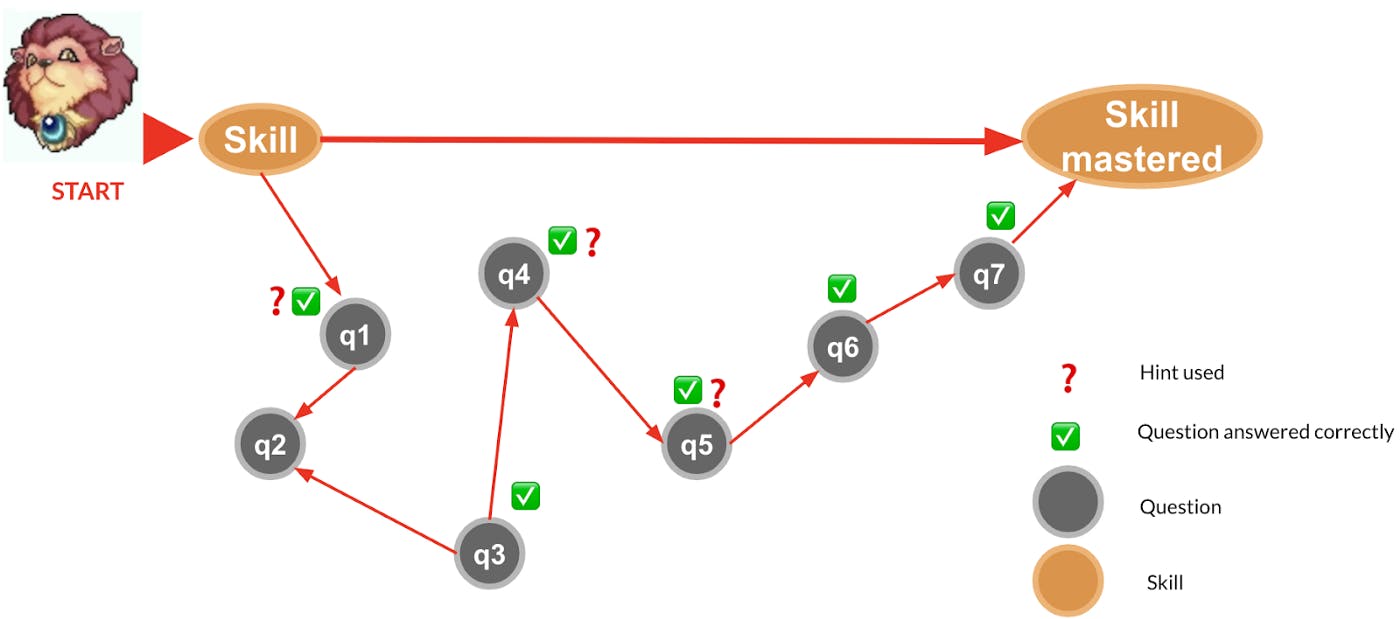
Chart showing how a student masters a skill in Prodigy
Unlike a static worksheet, the algorithm brings students back to prerequisite skills when it sees they’re struggling in a specific area, increasing student confidence and proficiency. As DGBL resources have improved over time through the inclusion of elements like adaptive algorithms, research has shown that games are a great way to help to motivate student learning (Byun & Joung, 2018).
Ultimately, this means Prodigy’s algorithm works with our immersive game experience to meet students where they are in the curriculum. Randomized-control trial research on adaptive assessment platforms has revealed that dynamic-learning programs that adapt to students’ individual needs and provide feedback to their teachers had “strong, positive effects on student achievement and motivation” (Faber, Luyten & Visscher, 2017; Tokac, Novak, & Thompson, 2019).
While students are playing, Prodigy’s algorithm is hard at work:
- Assessing student performance
- Deciding on the right content to deliver to students
- Providing real-time data that informs classroom instruction
Real-time data, reporting and assessment
Teachers know that DGBL works. In a survey from The Games and Learning Publishing Council (Takeuci & Vela, 2015), 71% of teachers said that DGBL was effective in improving their students’ mathematical learning. To improve learning, DGBL platforms ultimately need to provide teachers with high-quality, actionable, and easy-to-understand data.
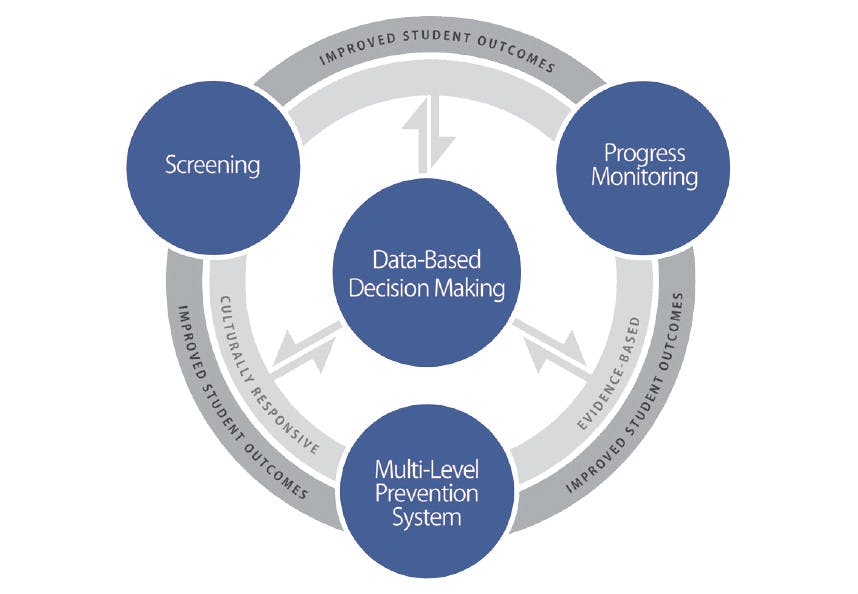
Click for source
Progress monitoring — the process of assessing student performance, such as quantifying student rate of improvement or responsiveness and evaluating how they’re responding to instruction — is important for understanding student achievement and providing the next step in their learning pathway.
Various research studies have shown that dynamic student progress monitoring is an effective way to support students’ growth, including one put forth by Faber, Luyten, & Visscher (2017).
We agree — and that’s why Prodigy is so much more than an engaging game for students! Prodigy’s ability to give students immediate feedback and provide data to teachers in real-time reports aligns our logic model with research-based best practices.
When students answer questions incorrectly, they’re given another opportunity to solve the problem and build on their skills. This helps students develop a growth mindset, as identified by Dweck (2017).
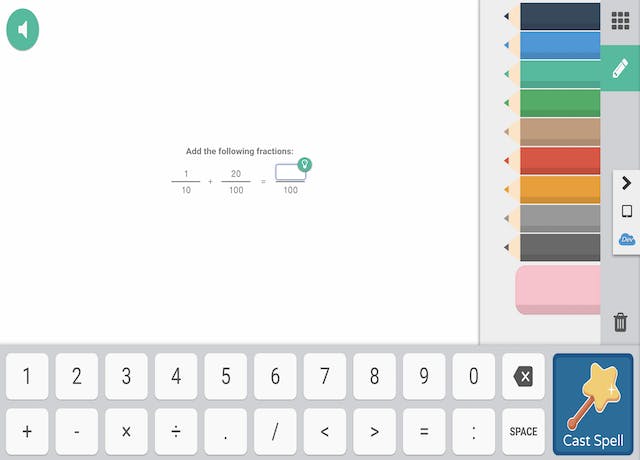
In-game question from Prodigy Math Game
Prodigy gathers data and generates comprehensive reports that provide an overview of student performance at the individual, class, and even school level. These reports help teachers pivot when teaching lessons or plan purposeful interventions, and give teachers the ability to personalize content and differentiate instruction (Deunk, Smale-Jacobse, de Boer, Doolaard & Bosker, 2018).
“Teachers who use progress-monitoring procedures with students… may better enable low-performing students to meet provisions of adequate yearly progress. However, teachers who implement systematic progress monitoring in general classrooms likely will reap benefits not only for students with identified needs but also for their other students, regardless of their achievement levels.
Stecker et al., “Using Progress-Monitoring Data to Improve Instructional Decision Making”
Improving attitudes and mathematical proficiency
The ultimate goal of our logic model is increased student achievement, confidence and a positive attitude towards math!
Research has shown that improved engagement from DGBL leads to increased student motivation to complete school work (Ninaus, Moeller, McMullen & Kiili, 2017).
Prodigy’s logic model demonstrates that when parents, teachers and administrators are engaged with Prodigy’s reports and understand student learning, they’re better equipped to support student learning.
Incorporating this type of resource into learning has shown to increase student motivation and engagement, which in turn leads to positive attitudes shown by students.
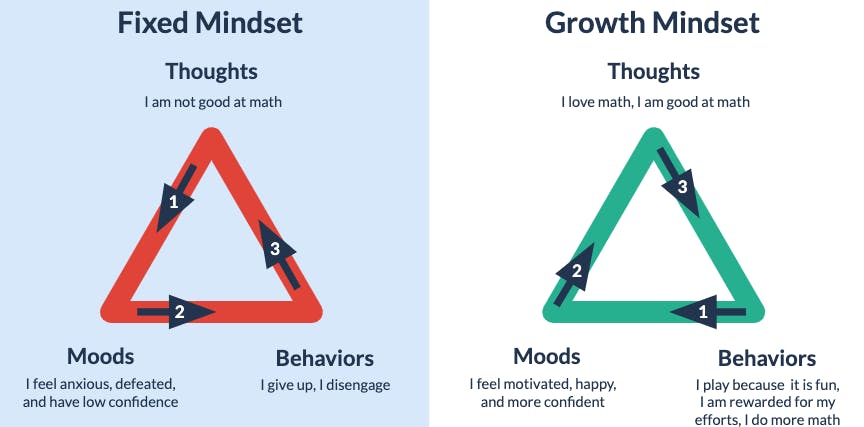
Bragg (2012) notes that when digital game-based math resources were implemented, 93% of class time was spent on task — compared to only 72% when students weren’t playing games online.
Dr. Carol Dweck, a Stanford University psychology professor, has done research around a fixed mindset versus a growth mindset (Dweck, 2006). Students with fixed mindsets believe that their abilities are set in stone and that no matter what they do, there is a ceiling to their abilities.
However, students with a growth mindset believe that with work and effort, the sky’s the limit and that they can achieve whatever they set out to do.
Prodigy’s in-game algorithm takes into account learners’ academic strengths and weaknesses and helps them build a positive attitude towards math by keeping them in their zone of proximal development (Vygotsky, 1978). This in turn, can shift students toward a growth mindset and improve both engagement and achievement.
Learn more about how a positive attitude towards math can boost student achievement
Final thoughts: Prodigy’s logic model
Prodigy’s logic model is deeply rooted in research-based best practices in order to directly support students’ improvement in mathematics proficiency and general attitudes towards mathematics.
Prodigy helps to support these outcomes on a daily basis through game-play and curriculum-aligned content that demonstrates our dedication to student engagement, a focus on providing consistent feedback during gameplay and digital content based on mastery learning theory.



